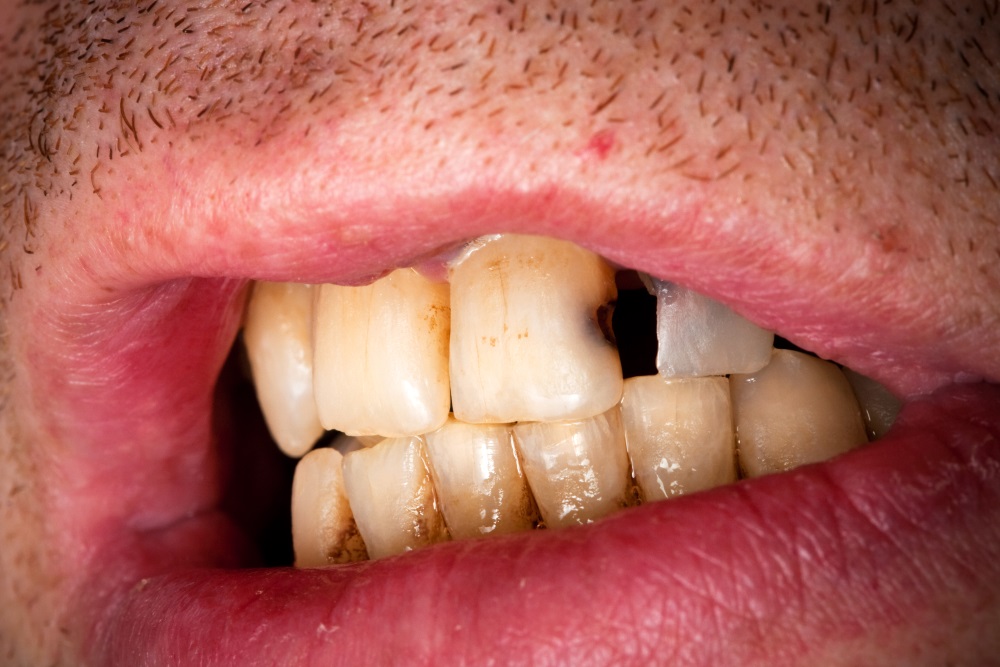Why Do Teeth Change Color?
According to the American Association of Cosmetic Dentistry, over half of Americans believe that having a bright, white smile is the most memorable feature of a face when they meet someone new.
For this and a long list of other reasons, it’s estimated that more than 45 million Americans have had their teeth whitened. That number continues to grow as teeth whitening flexes the title of the most popular and accessible cosmetic procedure.
As popular as cosmetic dentistry and tooth whitening treatments have become, have you asked yourself what causes teeth to turn yellow—or worse, black—in the first place? Once your teeth change to any less-lustrous shade, is there anything you can do to stop damage before you can’t even whiten them back to their “best and brightest?”
We’ll answer those questions in a high-level way, right here and now. If you are experiencing darkening or discoloration of your teeth, call Dr. Ku’s Fort Worth office today for a personal consultation.
Changes in tooth color
If your pearly whites are starting to look less–than–white, there could be a number of causes, including both environmental and physical factors.
First, food can cause a change in tooth color. Many plants have acidic properties (they actually turn basic when digested), and cause staining on the teeth before your GI breaks them fully down. The staining on your teeth doesn’t mean your dental structure isn’t healthy, but it can lead to issues if left unaddressed.
Other causes like tobacco consumption and specific illnesses can cause tooth discoloration, too. Keep reading for a detailed break-down of each.
All about stains from food
A major offender of tooth staining that can even lead to black-tinted teeth is coffee. Coffee contains ingredients called tannins, which are a type of polyphenol that breaks down in water. They are also found in beverages like wine or tea. Tannins cause color compounds to stick to your teeth. When these compounds stick, they can leave an unwanted yellow hue behind.
It only takes one cup of coffee a day to cause stained teeth. If you are considering switching your coffee for tea, it’s important to remember that green tea can cause greying of the teeth, while black tea actually can cause yellowing as bad as coffee.
Balsamic vinegar can also darken your teeth due to its natural color and acid content, which can further encourage staining from other foods. Eating raw veggies with balsamic vinegar will help, but be sure to brush shortly afterward for best results.
Finally, red wine is a major offender when it comes to darkening the teeth. After drinking red wine, teeth can change to a dull, grey color due to the same tannins in coffee and tea as well as the acids from the fruit that affect the pH level in the mouth.
We all “pick our poison,” because a life without coffee, tea, balsamic vinegar or wine would be kind of a bummer! Just don’t overdo it, and remember to brush soon after consumption.
Tobacco use
Smoking or using chewing tobacco products can make the enamel of your teeth more susceptible to stains. Nicotine and the tar in tobacco actually seep into the crevices of the teeth. Prolonged tobacco use can lead to both yellowing and serious darkening the teeth.
Interestingly, although nicotine itself is colorless, when combined with oxygen, it turns yellow. This means that even electronic cigarettes with nicotine infused “e-juice” can stain your teeth. The proof? Smokers will often have certain teeth that become darker than others due to their manner of inhalation.
Chewing tobacco is just as problematic. The brown tobacco mixed with saliva creates a dark brown liquid that is stains the teeth. Not to mention, the length of time someone tends to chew for can expose the teeth to this mix for dangerously extended periods.
Other internal issues
Another reason that a tooth may appear black is due to damage in the interior of the tooth. Sometimes, you’ll hear this referred to as a dead tooth.
Inside a healthy tooth, the pulp (the inside-most part of the tooth) contains blood vessels and nerves. Any dead or damaged nerves in the tooth pulp can lead to what’s called a “dead tooth,” or a tooth that no longer has any blood flow to it.
A dead nerve in a tooth is also sometimes called a “necrotic pulp” or “pulpless tooth.” A change in color to the tooth is the result of the red blood cells dying. The discoloration usually happens when a dead tooth is left untreated.
The main causes of a dead tooth are decay and trauma. While tooth decay starts on the outer layer (or the enamel) of the tooth, it can progress deep into the tooth if there’s no treatment taken. Once this happens, a pathway for bacteria to enter deep inside is created, and this puts the tooth at risk of “dying.” In the case of any physical trauma to a tooth (for example, from a sports injury or fall), the blood vessels can even burst. The direct trauma can also cut blood supply to the tooth completely off.
Whenever there’s little or no blood flowing to the tooth, the nerve and other tissues inside the pulp will eventually die. A dead, black tooth can be incredibly dangerous to your overall health, and it’s important to get it examined right away. While many times the tooth could fall out on its own, a dead tooth that remains in the mouth can pass infection onto other teeth and into the blood stream.
Preventing teeth from turning black
The American Dental Association recommends good oral hygiene as the best preventative measure for tooth discoloration, no matter the cause. They found that, after a review of scientific literature, along with guidance from governmental bodies and professional associations, there’s ample evidence to support that twice-daily brushing is optimal for reducing risk of cavities, gingival recession or periodontitis—and tooth discoloration along with it.
Brushing, combined with a fluorinated toothpaste, mouthwash and daily flossing, will help prevent decay that can lead to a dying tooth. And to avoid staining from foods and beverages, we at Dr. Ku’s office simply recommend drinking water or brushing your teeth soon after consuming anything prone to staining. When possible, you can also use a straw to prevent direct contact with your teeth.
If you are concerned about the health of your teeth or are looking for advice on lifestyle changes that will promote better health, such as smoking cessation, give our Fort Worth office a call today!






